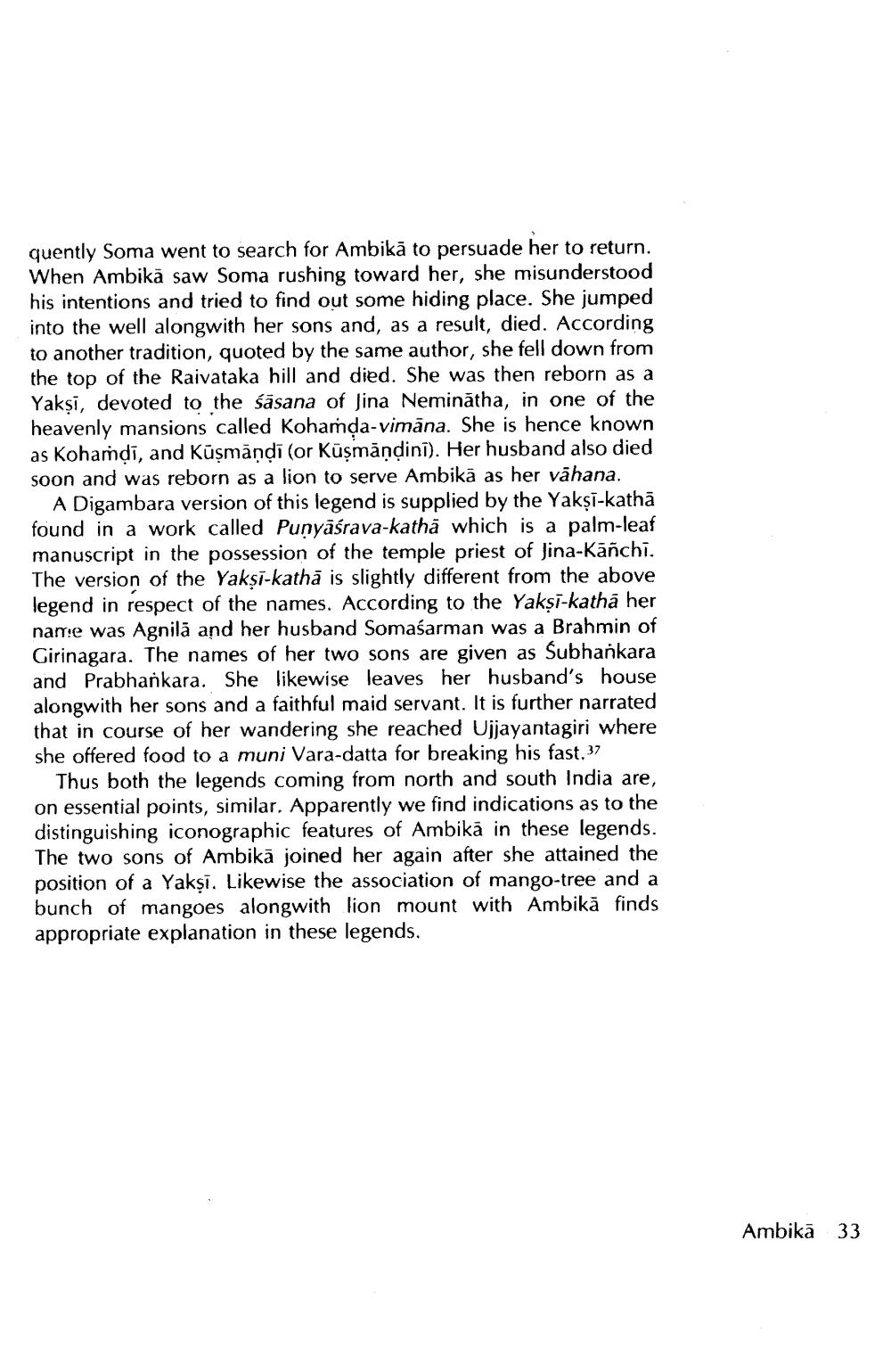________________
quently Soma went to search for Ambikā to persuade her to return. When Ambikā saw Soma rushing toward her, she misunderstood his intentions and tried to find out some hiding place. She jumped into the well alongwith her sons and, as a result, died. According to another tradition, quoted by the same author, she fell down from the top of the Raivataka hill and died. She was then reborn as a Yakși, devoted to the śāsana of Jina Neminátha, in one of the heavenly mansions called Kohamda-vimāna. She is hence known as Kohamdi, and Kūşmandi (or Kuşmāndini). Her husband also died soon and was reborn as a lion to serve Ambikā as her vāhana.
A Digambara version of this legend is supplied by the Yakşi-kathā found in a work called Punyaśrava-kathā which is a palm-leaf manuscript in the possession of the temple priest of Jina-Kāñcbi. The version of the Yaksi-kathā is slightly different from the above legend in respect of the names. According to the Yaksi-katha her nantie was Agnila and her husband Somaśarman was a Brahmin of Girinagara. The names of her two sons are given as Subhankara and Prabhankara. She likewise leaves her husband's house alongwith her sons and a faithful maid servant. It is further narrated that in course of her wandering she reached Ujjayantagiri where she offered food to a muni Vara-datta for breaking his fast.37
Thus both the legends coming from north and south India are, on essential points, similar. Apparently we find indications as to the distinguishing iconographic features of Ambikä in these legends. The two sons of Ambikā joined her again after she attained the position of a Yaksi. Likewise the association of mango-tree and a bunch of mangoes alongwith lion mount with Ambikā finds appropriate explanation in these legends.
Ambikā 33




